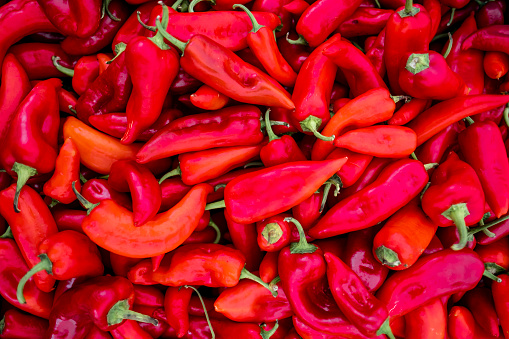Understanding the Origin of Piri Piri
The Roots of Piri Piri in Africa
Piri Piri, also known as African Bird’s Eye Chilli, has a rich and fascinating history deeply rooted in the continent of Africa. The origin of this fiery spice dates back to centuries ago and holds an integral place in African culinary traditions.
Discovery by Early Explorers
The arrival of Portuguese explorers in Africa during the 15th century led to the discovery of Piri Piri. These adventurers encountered the spice during their voyages along the African coast, specifically in regions like Mozambique and Angola.
Initially, it is believed that Portuguese traders brought Piri Piri back to Europe, where its intense heat and unique flavor quickly captured the attention of spice enthusiasts. The popularity of Piri Piri further grew as European colonizers began cultivating the plant, making it available across various continents.
Cultural Significance and Culinary Uses
Piri Piri has become an integral part of African cuisine, encompassing a range of dishes from stews and marinades to condiments and sauces. Its spiciness adds a distinctive kick to meals, enhancing the flavors and creating a memorable taste experience.
In addition to its culinary use, Piri Piri holds cultural significance in many African countries. It is often associated with traditional rituals, folk medicine, and even superstitions related to its supposed aphrodisiac properties or protective qualities.
Today, Piri Piri has transcended borders and gained popularity worldwide, with international chefs incorporating it into their recipes to add a fiery touch. Its journey from its African origins to global recognition stands as a testament to the enduring allure of this remarkable spice.
The Culinary Uses of Piri Piri (African Bird’s Eye Chili)
The Versatility of Piri Piri in Culinary Delights
Piri piri, also known as African bird’s eye chili, is a small but mighty spice that has taken the culinary world by storm. With its fiery heat and unique flavor profile, this chili has become a staple ingredient in many dishes around the globe. From savory to sweet, piri piri adds a delightful kick that elevates any recipe.
Spicing Up Savory Dishes
One of the most popular uses of piri piri is in savory dishes. Its vibrant heat and tangy flavor make it an excellent addition to marinades, sauces, and rubs. Piri piri can be used to spice up grilled meats like chicken, beef, or pork, giving them a smoky and zesty twist. Just a dash of piri piri can transform a simple stir-fry or pasta dish into a mouthwatering masterpiece.
A Fiery Twist on Snacks and Condiments
Piri piri isn’t limited to main courses alone; it can also add a fiery twist to snacks and condiments. You can sprinkle some ground piri piri over popcorn, potato chips, or roasted nuts for a spicy snack that will leave you craving more. Additionally, piri piri-infused oils and sauces are fantastic accompaniments to bread, fries, or grilled vegetables. The chili’s heat combined with its distinct flavor creates a tantalizing taste that will awaken your taste buds.
Indulging in Sweet and Spicy Treats
While piri piri is commonly associated with heat, it can also be used to add a surprising touch of spiciness to sweet treats. Piri piri-infused chocolate, ice cream, or fruit-based desserts offer a unique combination of flavors that will leave your palate pleasantly surprised. The chili’s heat provides a delightful contrast to the sweetness, resulting in a truly unforgettable culinary experience.
Whether you’re a spice enthusiast or simply looking to add some excitement to your dishes, piri piri is a spice worth exploring. Its versatility knows no bounds, and its organic presence in various cuisines is a testament to its exceptional flavor profile. So go ahead, embrace the heat and embark on a culinary adventure with piri piri!
Cultivation and Harvesting of Piri Piri
Cultivation of Piri Piri
Growing Piri Piri, also known as the African Bird’s Eye Chilli, requires careful attention and a nurturing touch. This fiery pepper thrives in warm climates with plenty of sunshine, making it ideal for cultivation in regions like Africa, particularly Mozambique and Malawi. Farmers often start by sowing the seeds in well-drained soil, ensuring a pH level between 5.5 and 7.0 to provide optimal conditions for growth.
Harvesting Piri Piri
The process of harvesting Piri Piri peppers involves patience and precision. As the plants reach maturity, they produce an abundance of small, vibrant red or orange fruits. It is crucial to wait until the peppers have fully ripened before picking them; this ensures maximum flavor and heat intensity. Careful handpicking is typically employed to avoid damaging the delicate plants and their fruit.
Packaging and Storage
After harvesting, the Piri Piri peppers are carefully sorted and cleaned to remove any impurities. Depending on their intended use, they may either be packaged whole or processed into various products such as sauces, powders, or flakes. To retain their fiery essence and pungency, proper storage is crucial. Piri Piri peppers should be kept in airtight containers away from direct sunlight and excessive moisture, preserving their distinctive flavor and potency for extended periods.
Health Benefits and Nutritional Value of Piri Piri
Immune Boosting Properties
Piri piri peppers are not only known for their fiery flavor, but also for their impressive health benefits. These small chili peppers pack a big punch when it comes to boosting the immune system. Piri piri peppers are rich in vitamin C, which is essential for a healthy immune system. Just a small amount of these peppers can provide a significant portion of your daily recommended intake of vitamin C. A strong immune system helps to protect against common colds, flu, and other infections.
Anti-Inflammatory Effects
Piri piri peppers contain compounds that possess anti-inflammatory properties, making them beneficial for reducing inflammation in the body. Chronic inflammation is linked to various health conditions such as arthritis, heart disease, and certain types of cancer. Consuming piri piri peppers regularly may help to alleviate inflammation and promote overall well-being.
Metabolism and Weight Management
Another benefit of piri piri peppers is their potential to boost metabolism and aid in weight management. These spicy chilies contain capsaicin, a compound that has been shown to increase thermogenesis and fat oxidation in the body. This means that consuming piri piri peppers can help to rev up your metabolism, leading to increased calorie burn and potentially assisting in weight loss efforts.
In addition to these specific health benefits, piri piri peppers are also a good source of vitamins A and B6, as well as minerals like potassium and magnesium. Incorporating piri piri into your diet can add a flavorful kick to your meals while providing you with an array of nutritional advantages.
Piri Piri in Global Cuisine and its Cultural Significance
The use of Piri Piri in global cuisine has become increasingly popular in recent years. This African bird’s eye chili, known for its fiery heat and unique flavor, has found its way into various culinary traditions around the world.
Piri Piri Spreads its Wings
Originally from Mozambique and Angola, Piri Piri peppers were introduced to different parts of the world during the era of European colonization. These small, potent chilies quickly adapted to different climates and grew in popularity across continents. Today, Piri Piri is featured prominently in the cuisines of countries such as Portugal, South Africa, Brazil, and even parts of Asia.
One of the key reasons behind Piri Piri’s global success is its ability to infuse dishes with an intense heat and vibrant flavor. Whether used as a marinade, a seasoning, or a garnish, Piri Piri adds a distinct touch to any dish. Its unique combination of spiciness, fruitiness, and a hint of acidity makes it a versatile ingredient in both traditional and fusion cuisine.
Cultural Significance and Culinary Traditions
Piri Piri holds cultural significance in the regions where it originated. In Mozambique and Angola, for example, it is a staple in many traditional dishes, representing local pride and heritage. The chili’s heat is often associated with bravery and strength, reflecting the spirit of the communities that embrace it.
In Portugal, Piri Piri gained prominence through Portuguese explorers who brought the chili back from their voyages. The country’s cuisine adopted the chili, leading to the creation of iconic dishes like “Frango Piri Piri” (grilled spicy chicken) that are loved by locals and tourists alike. Today, Piri Piri is an integral part of Portuguese cuisine, showcasing the influence of African flavors on traditional European dishes.
Beyond its cultural associations, Piri Piri has also become a symbol of culinary adventure and exploration. Its presence in global cuisine speaks to the curiosity of chefs and food enthusiasts, who continuously seek new flavors and experiences. Piri Piri’s popularity has transcended borders, creating connections between diverse culinary traditions and fostering a sense of global gastronomic appreciation.












